In one way, the piano is like the guitar because it makes sound by vibrating strings, however, the way it’s structured is significantly different. Either way, there are a few things about the piano that make it a superior instrument for learning music.
It’s best to play the piano before the guitar because the piano is easier to learn in the beginning stages, you’ll learn to read standard notation, and you’ll familiarize yourself with the bass and treble clef which will help you learn other instruments quickly.
Why You Should Learn To Play the Piano First
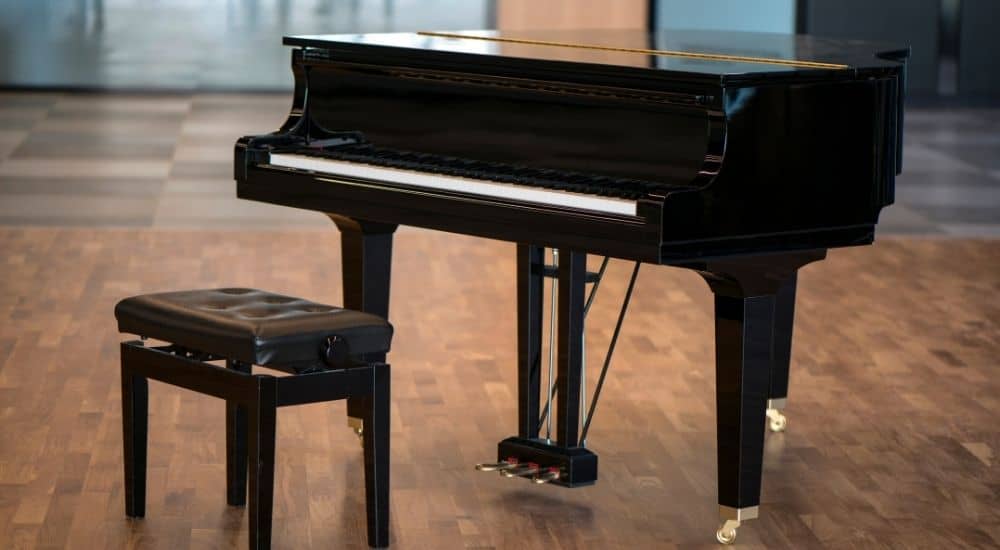
1) Piano Skills Are Transferable
The skills you learn on piano can transfer to other instruments because you’ll need to understand both the bass and treble clef to play the piano (which are the two most prominent clefs in music), and you’ll need to learn to read music. We’ll talk about this and standard notation more in a second.
Once you’ve learned the piano, you’ll have a fairly good understanding of how the guitar operates as well. You’ll only need to find where all twelve notes lie on the guitar fretboard in addition to the tuning of each string. A person’s knowledge of the piano will definitely help with this.
2) Piano Includes Both the Treble and Bass Clef
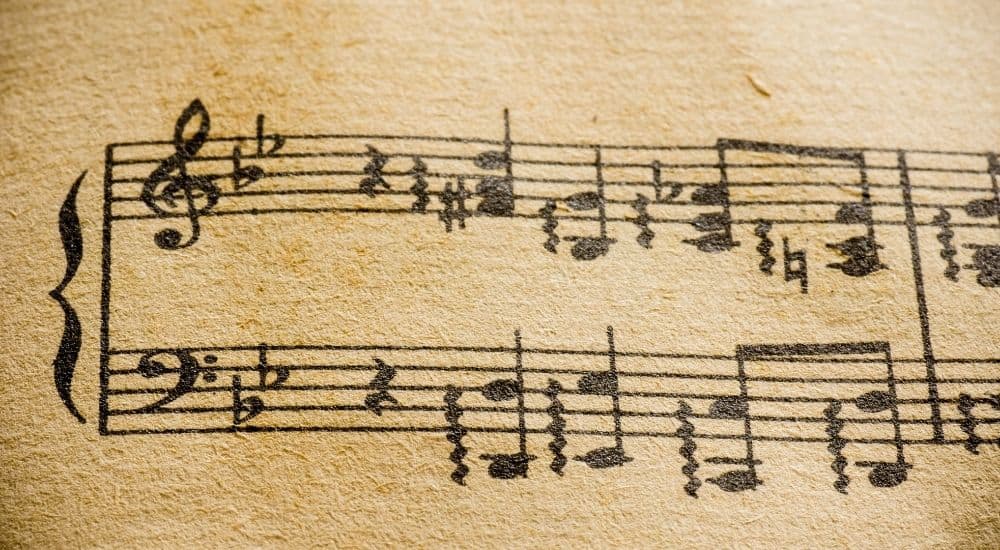
The piano uses the treble and bass clef to communicate what’s being played on the right and left hands.
There are different ways for memorizing the notes including anagrams like All Cows Eat Grass and Every Good Boy Deserves Fudge, but the important point here is that, through the piano, you’ll learn to read not just one but two staffs.
This means you’ll have the musical literacy to play instruments like the guitar, piano, violin, bagpipes, flute, bass guitar, and upright bass just by learning one single instrument. I would argue that this is the primary reason why most instructors recommend learning the piano first over the guitar.
It’s because it’s a great foundational instrument for learning music. Coupled with an inexpensive program like PianoForAll and music theory studies, you’ll be well on your way to learning how to play not just one instrument but many others too.
If you’ve started with the guitar as your first instrument, you’re already at somewhat of a disadvantage because you only learn to play it with music on a treble clef, if that. The truth is that most guitarists use tablature.
Tablature, while incredibly useful (especially when used on Guitar Pro 8), is not conducive to learning other instruments because no other instrument uses it except for the bass guitar.
You won’t learn to read music this way, you won’t familiarize yourself with bass and treble clef, and your musical literacy will suffer as a result. That doesn’t mean you shouldn’t learn this way at all, but it’s just a disadvantage.
Another important point to mention is that learning to read music on the piano is a lot easier because of the way the keys repeat themselves, but we’ll talk more about this in a second.
3) Easier to Learn (and See) Chords and Scales
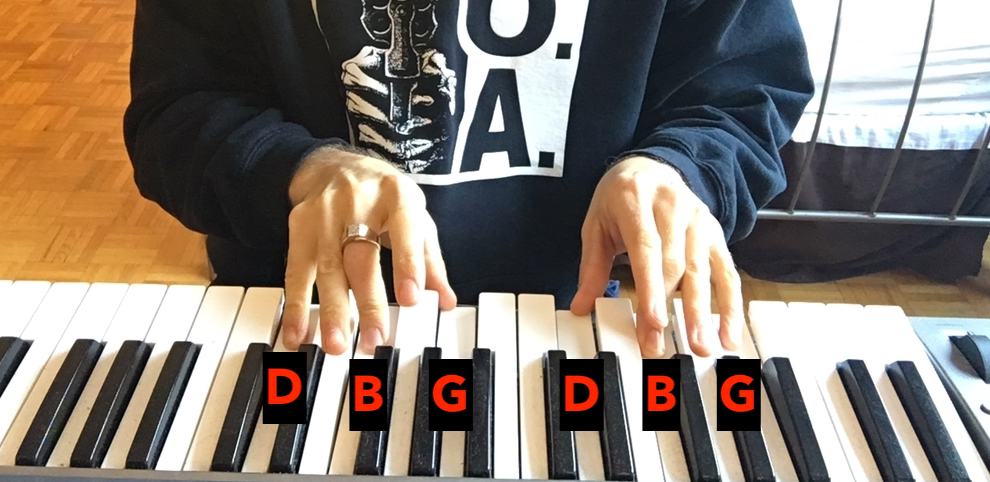
A standard guitar like my PRS SE Custom 24 has six strings and anywhere from twenty to twenty-four notes per string. That means most guitars have about 144 notes while the piano has 88.
The guitar, however, only covers four octaves, but you can play the same octaves in several places which is both its advantage and disadvantage, depending on how you look at it.
The piano has 7 octaves because of how it’s laid out. This makes playing music more versatile because you have three other octaves you can’t get on the guitar. The keys are evenly distributed and replicated across the keyboard which allows for great visibility.
The image shown above demonstrates precisely that. Because the notes repeat themselves across the instrument, once you learn one chord like G Major, you can play that same chord in 7 different octaves incredibly easily.
The best way of describing it is that the piano has a birds-eye view of the notes, whereas the guitar is more of a maze.
Because you can see precisely what you’re doing from above, it’s also easy to see intervals between the notes since they are side by side.
A great way of experimenting with different tonalities, like modes, for example, is to hit one note while holding the sustain pedal and then play different scales and patterns over top of it.
4) The Piano Has A Less Confusing Layout Compared to the Guitar
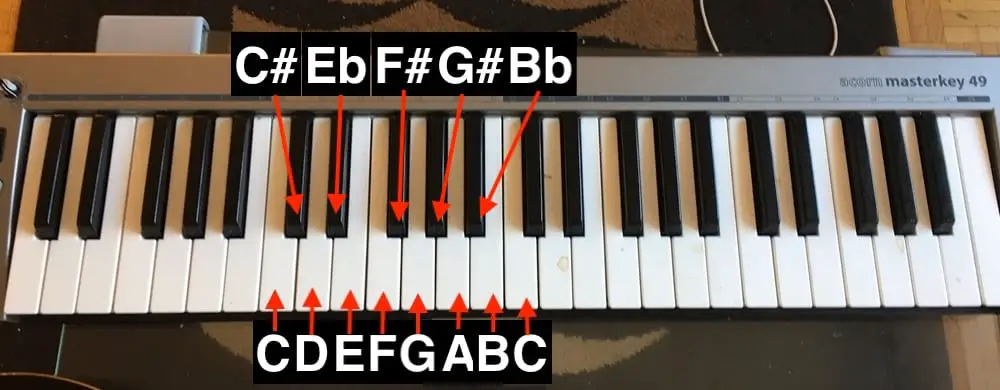
Without question, the piano is far easier to understand and remember once you’ve gotten the 12 notes down pat.
What you can see in the image shown above is how the notes are laid out across the piano, over and over again, and across every single octave. If only the guitar were this easy to remember.
As we’ve already mentioned, what’s so beautiful about the piano is that once you remember the 12 notes in one octave, you’ll know how to repeat it all across the keyboard.
It’s quite intuitive, the piano, and it serves itself incredibly well for compositions.
It makes total sense to me that companies chose the piano rather than the guitar as the foundation for MIDI controllers, which brings me to my next point about the guitar.
i) Each Guitar String is Tuned Differently
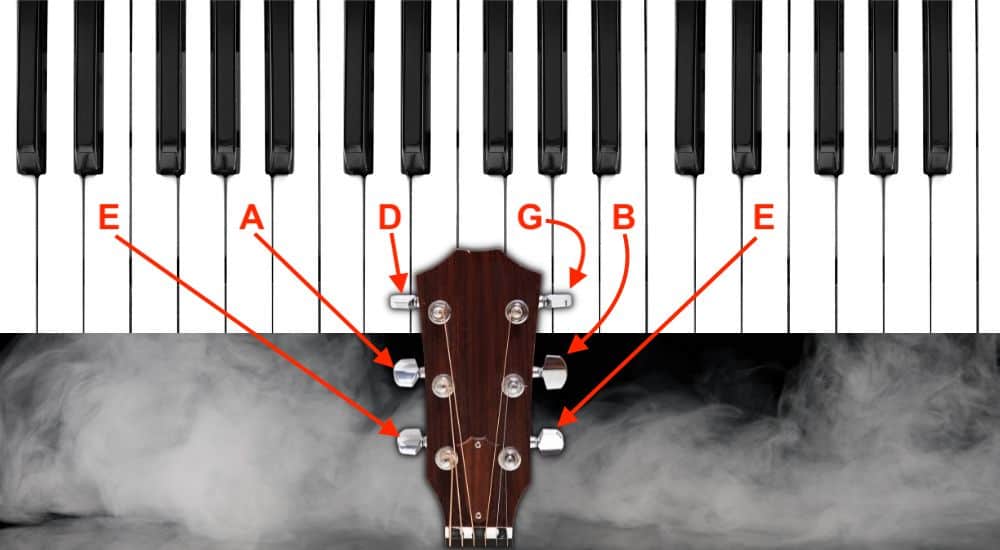
On a standard guitar, there are six strings. Each note is laid out and separated by frets chromatically. Knowing what the string names are is vital because you’ll know where to start and how to vertically form chords and scales.
From the lowest to the highest strings, the names are E, A, D, G, B, E, and you can see what these notes look like on the piano in the image shown above.
With the exception of G and B, the notes are all a 4th away from each other. To a beginner, all of this information can be a bit intimidating.
A piano is the same pattern from the first key to the last, making learning more straightforward. They are separated in black and white keys with the same pattern for all 12 notes.
It may still take you some time to memorize the notes, but it’s far easier to find all of them after you learn one octave, in fact, once you’ve learned one octave, you know all of the piano keyboards. This isn’t the way the guitar works which is a strength and a weakness, depending on the person.
One of the advantages of the guitar is the many tunings (my guide on this). You can tune each string differently to mimic open or closed chords which is great for creative purposes. But this introduces a complexity to the instrument that isn’t seen on the piano.
To someone who already knows what they’re doing, altered tunings are great, but it might be too much for someone who’s just learning, especially if you’re still trying to get a handle on the notes of the fretboard.
ii) And It’s Harder to Memorize the Notes of the Fretboard
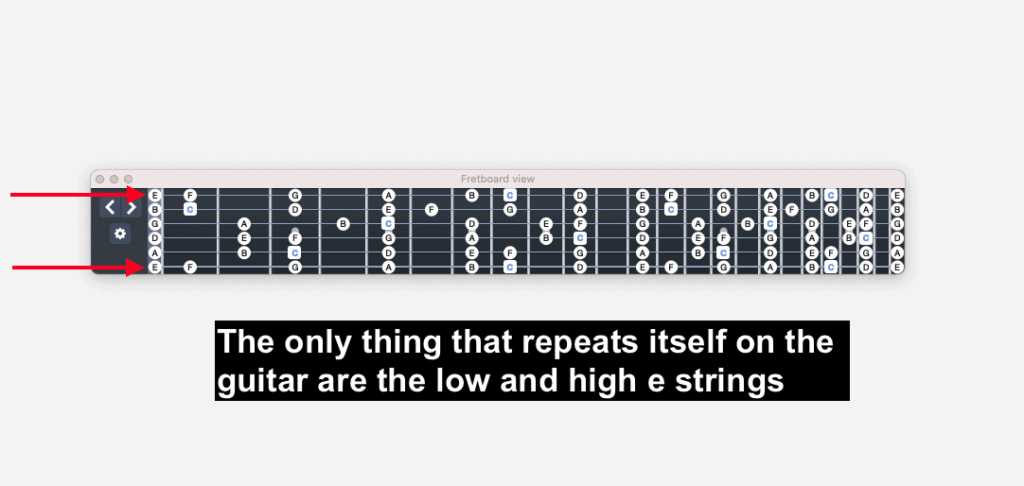
The image shown here is the key of C all across the fretboard. There is a pattern there, but it’s not that easy. If we were to map out every note on the fretboard, it would only look MORE confusing, rather than less confusing.
When you add altered tunings, it gets even more complicated because you have to take the tuning into account every time you think of a note. This is probably why production companies didn’t revolve MIDI controllers around guitars which we’ll address now.
5) Music Production Revolves Heavily Around the MIDI Keyboard
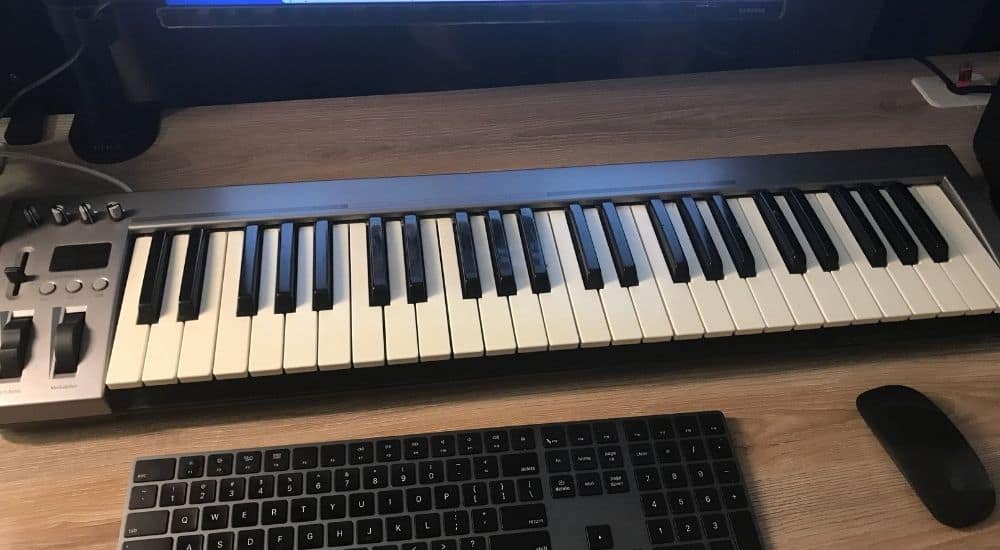
Probably one of the most unspoken advantages to learning the piano is the fact that learning the instrument serves itself very well on account of the MIDI keyboard, which is structured on a keyboard.
Having a solid understanding of the piano keys will help you, big time, as will the theory knowledge that’ll come from taking piano lessons.
Mark Sarnecki’s Complete Elementary Rudiments as well as the Answer Book is a great way to learn too and I recommend it all the time.
It’s hard to imagine an instructor teaching their students how to play the piano without bringing up triads, major and minor chords, key signatures, and intervals, all of which play a huge role in playing and understanding music.
The MIDI keyboard is the producer’s primary controller.
You do almost everything with it, including programming drums, creating chord progressions, and melodies, and operating virtual software instruments. Clearly, knowing how to play the piano is going to help you make your way around the keyboard and therefore the DAW, as well.
6) You Need to Learn to Read Music to Play Piano
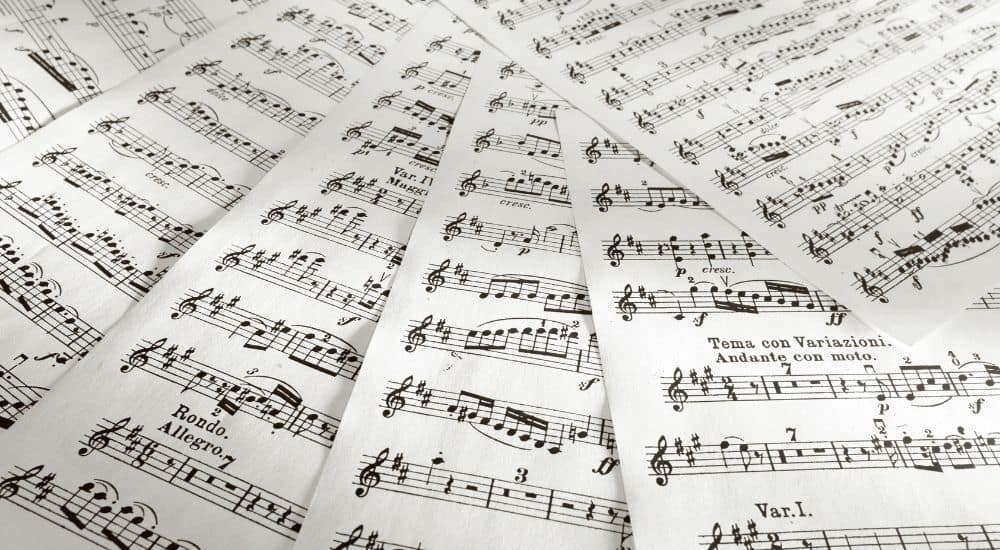
I’ve mentioned this a couple of times already, but it’s worth repeating in its own section. Learning how to play the piano will necessitate the comprehension of standard notation, which is the proper terminology for what’s on the paper in the image shown above.
Knowing how to read standard notation isn’t 100% necessary, but it will certainly help you in many different ways.
One of the many advantages of understanding standard notation is that you’ll be able to apply what you know to the guitar and a huge list of other instruments (check out Music Notes for the list).
The guitar always uses the treble clef, therefore, you’ll have a great idea of how to play the guitar once you’ve learned the piano and also remembered where the notes are on the guitar. Another reason why learning the piano first is a better option is because it’s just easier to understand.
Which Instrument Is Harder, the Piano Or the Guitar?
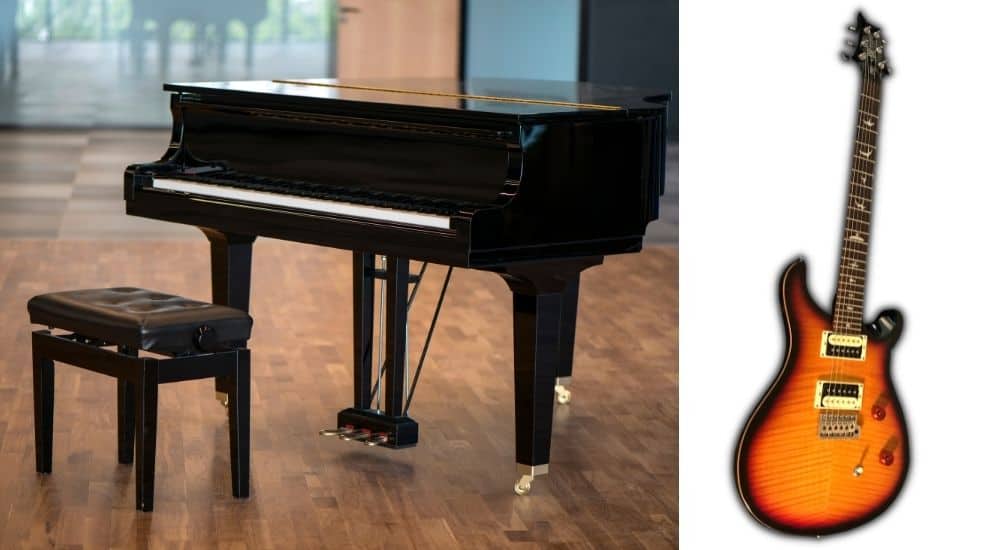
The guitar is more complex to play than the piano for several reasons, most of which I explored already in my article on this very topic, but there are a few things I forgot to talk about.
The guitar requires a lot of memorization at first because nothing repeats the way a piano does. Each fret dot is a different note, so unless you know what the string name is and how to count out the intervals, you probably won’t understand.
1) It’s Harder to Remember Proper Finger Positions
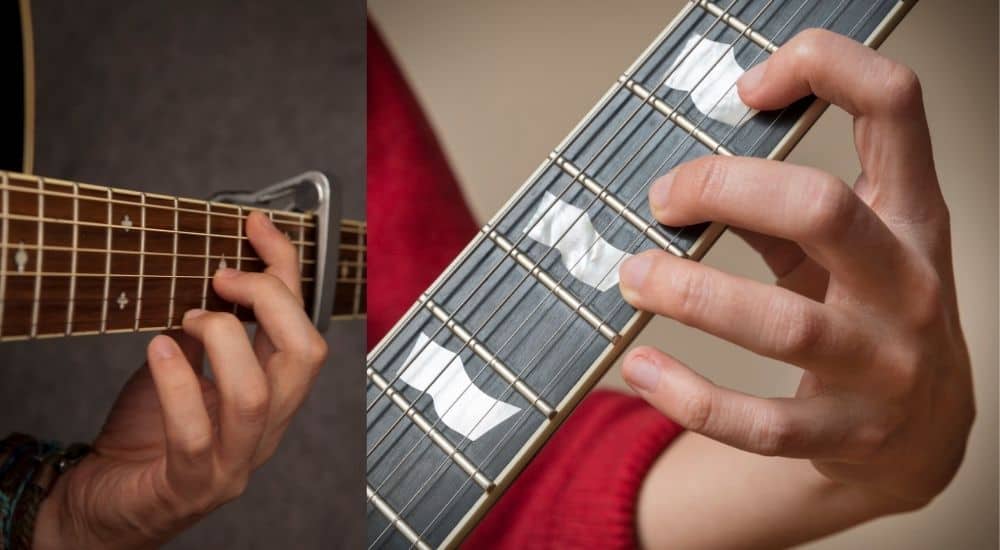
Proper finger and hand positions are essential. On a piano, it’s extremely easy to figure out hand positions.
There are seven white keys divided by a set of two or three black keys. Not only is this helpful to the eye, it’s exactly how the note intervals play on a major scale.
There are Whole and Half-step intervals that you have to play to make a major scale, and they are also set up in groups of 2 and 3. The half steps on the piano are the white keys that have no black keys between them, B and C as well as E and F.
On a guitar, it’s a lot harder to figure out hand positions because the scales are set up both vertically and horizontally.
B and C, as well as E and F, are still only a half step between each other, so you don’t skip a fret, but there is no specific marker like two white keys next to each other. However, once you can clearly see why the notes are set up on the piano, you can find chords easily.
2) Guitar Scales look Sporadic Unlike Piano Scales
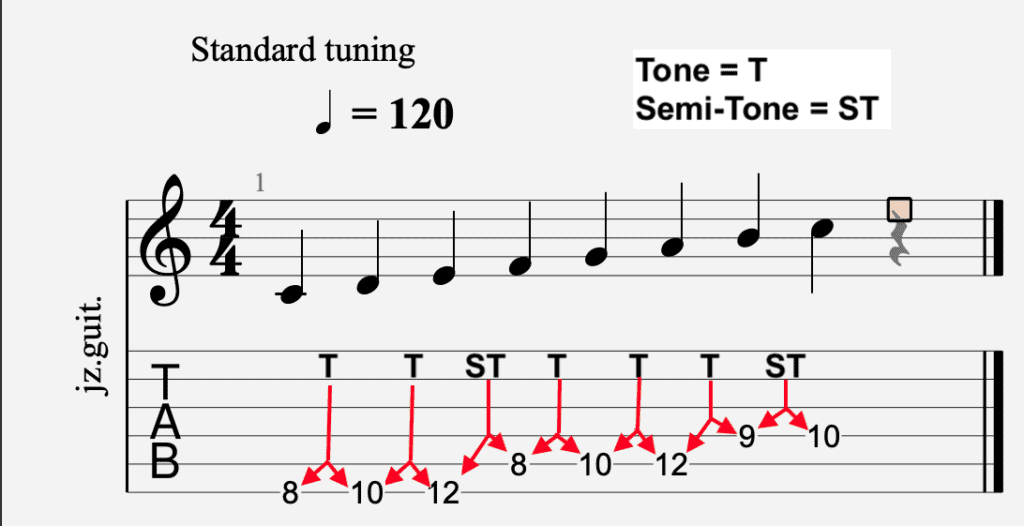
Learning scales is very helpful for learning how to play an instrument, particularly if you’re trying to get a handle on a specific style as I talked about in my flamenco article. You can’t get very far as a musician without at least some basic knowledge of scales.
And by at least some, I mean that nearly everyone knows probably one scale whether they know they do or not, and the minor pentatonic scale is one of those patterns.
To play scales on the guitar, you have to zig-zag across the fretboard, unlike the piano, where the scale is clear in a linear setup, making the guitar a lot more challenging to learn. Most guitarists don’t have a clear idea of the individual notes, instead, they learn chords as shapes.
3) You Have to Learn How to Pick and Finger Notes
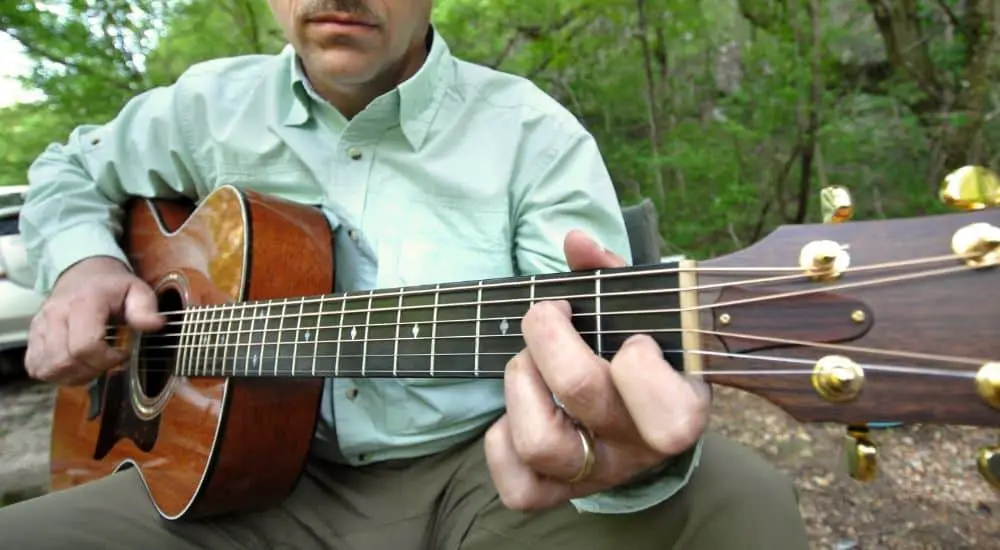
A piano only requires a slight force of the fingers to play a note beautifully and with control. There are no extra things necessary unless you wear piano gloves, which aren’t very popular. The hard work is done by the hammers inside the piano.
The basic technique of playing the piano can be attained quickly unlike a guitar.
A guitar requires a lot more force with the left hand to hold down notes, and the right hand has to either pick the notes with a plectrum or pluck the notes with the fingers.
The coordination takes a bit of time, and a lot of people complain about finger calluses (my article on this).
Other skills that the guitar needs that a piano doesn’t is left-hand techniques like hammer ones and pull-offs. Playing the guitar with the right amount of tension and letting certain strings ring while muting others is hard. It can take a long time to pull this off.
Important Things to Note About Playing the Guitar vs Piano
1) Guitar Skills Can Also Be Transferable
We have talked about the piano skills you acquire when learning being transferable, but the guitar skills can also be transferable to the piano. Not the same way if you learned piano first, but you’ll at least know some basics like intervals and scales, assuming you learned a bit of music theory.
2) Guitar is Easier to Play For Adults
A piano will be easier for a younger person to start on because their hands do not have to grip a large fretboard with a lot of hand strength, and they can start playing an easy song almost right away.
A child can certainly learn how to play the guitar, but the hand-eye coordination needed to synchronize the left and right hand and the development of finger calluses can be hard for a kid.
3) Choose the Instrument You’re Most Interested In
While it may be more pragmatic to learn how to play the piano before the guitar, the fact of the matter is that what matters most is actually how much you like the instrument rather than the purported practicality of it.
If you don’t listen to music with piano in it, you may find it hard to learn pieces due to a lack of inspiration.
In my case, I found the music of Metallica incredibly inspiring when I first started playing the guitar. I liked Nirvana, Pearl Jam, Alice In Chains, and other bands too.
However, it was Metallica’s work that really made me pick up the instrument and take it super seriously. If you don’t have that muse, you probably won’t play. Plain and simple.

 Written By :
Written By :